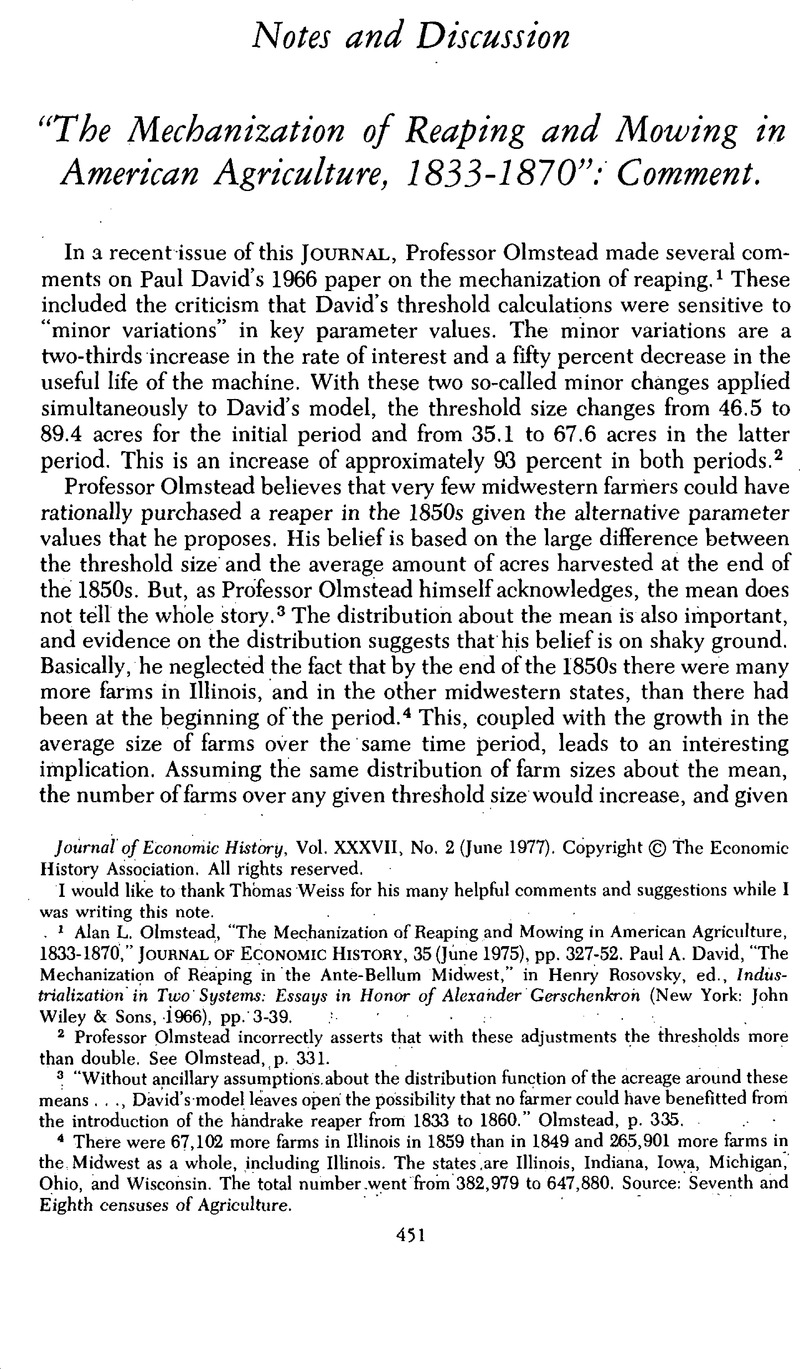Published online by Cambridge University Press: 11 May 2010

1 Olmstead, Alan L., “The Mechanization of Reaping and Mowing in American Agriculture, 1833–1870,” Journal of Economic History, 35 (June 1975), pp. 327–52CrossRefGoogle Scholar. David, Paul A., “The Mechanization of Reaping in the Ante-Bellum Midwest,” in Rosovsky, Henry, ed., Industrialization in Two Systems: Essays in Honor of Alexander Gerschenkroh (New York: John Wiley & Sons, 1966), pp. 3–39Google Scholar.
2 Professor Olmstead incorrectly asserts that with these adjustments the thresholds more than double. See Olmstead, p. 331.
3 “Without ancillary assumptions, about the distribution function of the acreage around these means…, David's model leaves open the possibility that no farmer could have benefltted from the introduction of the handrake reaper from 1833 to 1860.” Olmstead, p. 335.
4 There were 67,102 more farms in Illinois in 1859 than in 1849 and 265,901 more farms in the Midwest as a whole, including Illinois. The states are Illinois, Indiana, Iowa, Michigan, Ohio, and Wisconsin. The total number went from 382,979 to 647,880. Source: Seventh and Eighth censuses of Agriculture.
5 Following is the percentage frequency distribution for Illinois farms in 1849 and 1859, the distribution on which Chart 1 is based:

6 The total number of Illinois farms increased by 88 percent over the period while the total number of farms in the other five midwestern states increased by 81 percent. At the same time, the total bushels of wheat harvested in Illinois was up 153 percent, while the total for the other five states was up 105 percent.
7 I owe these remarks to the comments of an anonymous referee.